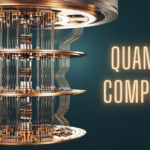Artificial intelligence (AI) and robotics are becoming prevalent in daily life. AI is also becoming a topic of interest in the film industry. Increasingly, audiences are beginning to recognize AI in movies, with the inclusion of more technologically savvy robots which perform non-intrusive actions in industrial environments.

For example, Pepper the robot from the forthcoming film Hidden Figures uses AI to help him navigate through the maze of a museum. The character has trouble navigating and must rely on his memory and his familiarity with surroundings to get through the museum. The character isn’t given any commands or instructions. But because of the creative artificial intelligence within the computer system that provides the software, Pepper learns how to navigate the museum and learns essential data about its layout. This form of creativity artificial intelligence allows Pepper to navigate through the museum on his own, without requiring any external instruction.
Similarly, in the upcoming sci-fi movie Humans, which also has a strong AI element, the role of an artificially intelligent android will be played by Joel Harlowe, a highly creative writer. Similar to the character in the earlier film, Pepper, Joel must navigate complex situations based on data provided by the artificial intelligence system he is part of. As the character becomes more human-like, he begins to engage in more difficult decisions for which he must have strong intellectual reasoning skills.
Similarly, another sci-fi movie starring Matt Damon, Cybill Shepherd, is to feature a character whose artificially intelligent system is capable of creating advanced intelligent conversations with its users. In this role, Shepherd is to use this creativity AI system to discuss the issues of war and peace with his fellow aliens. Cybill is the first ever fully-evolved artificial intelligence that is built and taught by humans in a controlled environment. It forms a part of the studio’s creative team.
Another facet of AI in film is used in the creation of artificial intelligence for visual recognition. A good example is the character of Drones, an artificially intelligent machine that is capable of performing a variety of actions even without direct human supervision. It can recognize an enemy soldier by his appearance and fire on him without harming the man or woman it was designed to kill. The army used such a robot in the military’s secretive covert operations.
In the future, AI in film will enable robots to perform many of the same tasks as humans. Will that be enough to raise the bar for the artistic side of Hollywood? Many believe so, given the success of movies like Batman and Harry Potter. Artificial intelligence and its implementation in creative endeavors by film makers will raise the bar even further. But it won’t be the sole beneficiary in the box office race. AI in film will most likely increase access to content, but human viewers and audiences will also use their ingenuity and brains to produce quality entertainment.
Another facet of AI in film and AI in literature is its incorporation into scrapbooks. AI in books can help authors with the creative process. Scriptbooks can help authors flesh out scenes, create characters and build plotlines that they might not have been able to create otherwise. AI can also make connections that would otherwise be hard to make.
AI in film and AI in literature are only just starting to come to light. Studios are still investing in the r&d for these technologies. But the future of entertainment is bright. Sixense, the company behind the bionic arms computer game developed by Iron Galaxy will be making at least two spinoffs of their popular game.





